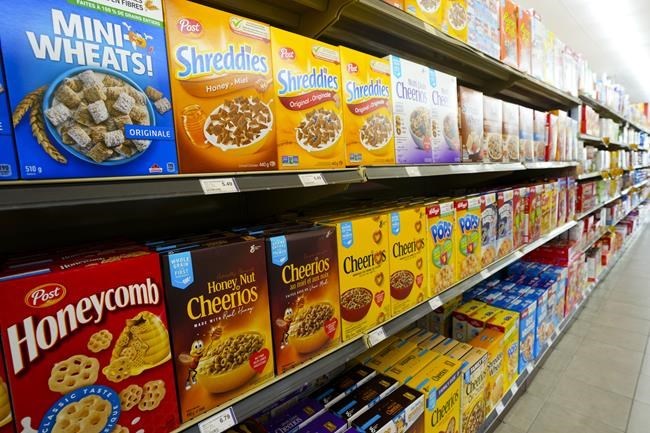TORONTO — A new report that looks at the prevalence of marketing to children inside grocery stores and restaurants suggests regulation is needed to help reduce unhealthy food temptations.
The report, funded by Heart and Stroke and published on Tuesday, audited displays at more than 2,000 restaurants and 800 stores across Canada and says children may be bombarded with messages that make junk food seem appealing.
Researchers found nearly 53 per cent of stores had "junk food power walls" at checkout aisles, which it says are prime areas to market to kids because products are placed within their reach.
The research said that placement encourages "pester power" — when children nag or pester their parents to make impulse purchases.
"Parenting is hard enough without having to deal with environments that are explicitly designed to get our kids pestering us for junk food that's not supportive of their health," said Leia Minaker, the author of the report and an associate professor at the University of Waterloo.
"We're set up to fail by the stores and the restaurants that we go into," Minaker said.
"It's really hard to make healthy choices for your kids in this context."
Designs and themes such as "magic, adventure and zoo animals" are also commonly seen in beverage and ice cream fridges, Minaker said.
The report comes as Bill C-252 for "prohibition of food and beverage marketing directed at children" is under consideration by the House of Commons Standing Committee on Health.
“Given the high proportion of child-directed marketing observed in both stores and restaurants in this Canadian research, it’s clear that policies aimed to restrict marketing of unhealthy food and beverages to kids – something long promised by the federal government – should include point-of-sale locations,” said Doug Roth, CEO of the Heart and Stroke Foundation in a news release.
Stores can help by creating "healthy checkout policies," where checkout aisles wouldn't feature junk food and sugary drinks, the report said.
Prohibiting toy giveaways with unhealthy children's meals in restaurants could also help reduce consumption of unhealthy food, it said.
The Retail Council of Canada (RCC) said it "questions" the report's findings, including how often certain types of advertising displays are directed at children.
"(That) seems to be offside for us," said Michelle Wasylyshen, spokeswoman for the council, in an email on Tuesday afternoon.
"The focus should not be on retail, but on the national and global supplier brands that own and sell these products across a variety of channels since they have control over packaging and design and ultimately advertising," she said.
"RCC has been working closely with Health Canada and other stakeholders on this and related issues."
A spokesperson for Ad Standards, the Canadian self-regulatory organization for the advertising industry, said they couldn't comment specifically on the report.
But they directed The Canadian Press to the Code for the Responsible Advertising of Food and Beverage Products to Children, which restricts advertising of products that don't meet certain nutritional standards to children under 13 years of age.
Ad Standards will begin administering the code later this year, spokeswoman Jessica Yared said in an email.
But according to the code, the restrictions don't apply to many point-of-sale marketing tactics, including "displays, in-store flyers, posters, menus, menu boards and other on-premises communications and material about a food or beverage product."
However, those marketing media "may not include language that directly urges a child to buy the product, or directly urge a child to ask another person to buy it for them," Yared said.
This report by The Canadian Press was first published March 21, 2023.
Canadian Press health coverage receives support through a partnership with the Canadian Medical Association. CP is solely responsible for this content.
Nicole Ireland, The Canadian Press



